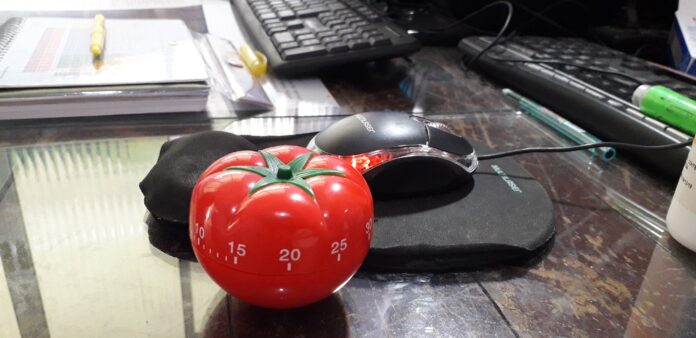Have you ever been trying to focus and weren’t able to concentrate? Was there an activity you were trying to execute, but you were continually distracted?
Hi, I’m Peter Nichol, data science CIO.
Today we’re going to talk about an exciting technique that allows you to focus and retain some of the performance that maybe you’ve lost or has been slowly eroded over the years.
The idea is called the Pomodoro Technique, and it was invented by Francisco Cirillo in the 1990s. While attending Guido Carli University in Rome, he was trying to develop an approach to study more effectively and decrease the time he spent studying while maintaining his grade-point average.
During this process, he discovered a method to improve his focus, which he dubbed “the Pomodoro Technique.” It’s named after the Italian word for tomato. It was so named because, while Cirillo was experimenting with this technique, he used a timer in the shape of a tomato to monitor and measure his time intervals.
Here’s how the technique works. You set a timer for 25 minutes, turn it on, and remove distractions. You shut off your phone. You turn off the TV. You log out of your email and try to focus on whatever that activity is. Maybe you focus on strategic thinking or executing a specific action or modeling a spreadsheet. Whatever it is, you focus for 25 minutes uninterrupted. When that time is up, you take a five-minute break. You get up, walk around, and allow your brain to unwind. You relax your mind during that five minutes. Then you repeat the process. After each cycle of 25 minutes of focus and five minutes of distraction, you make a checkmark on your computer or in your notebook. Once you get to your fourth cycle, you take a more extended break for 15 or 20 minutes.
This technique helps you maintain focus for specific periods while minimizing distractions. It’s a great approach if you have to get something done and you’re constantly being interrupted.
As executives, a lot of our time is spent fielding questions and supporting our staff. Ultimately, it’s a day of constant disruptions. We’re presented with meetings we didn’t plan to attend. We have fires we didn’t think we’d have to put out.
If you’re able to use this technique and focus, it might add another 10% or 15% more time to your day to be effective. I use this technique in combination with an app on my iPhone using iOS. However, I’m sure there are similar mobile apps for Android. I use an app called Interval Timer.
- I set 25 minutes on the timer.
- I hyper-focus.
- I remove all my distractions.
- I then take a five-minute break and recover.
After the fourth cycle, I take a more extended break, usually 15 or 20 minutes, get up, walk around, and maybe get something to eat or drink.
As you start your week, reflect for a minute. What would happen if you hyper-focused and managed to carve out another 15% or 20% of time that week? This might total four, five, or even six hours a week that previously weren’t used or used well. You now have the opportunity to reinvest that time into something more strategic and more productive.
Hi, I’m Peter Nichol, Data Science CIO. Have a great week!
